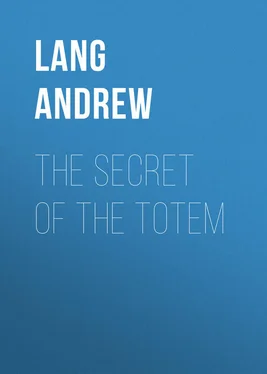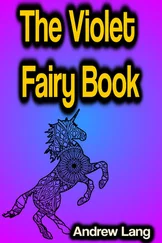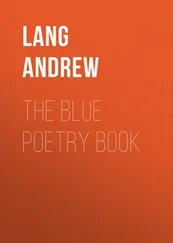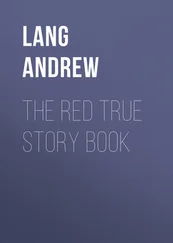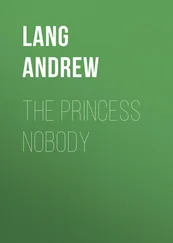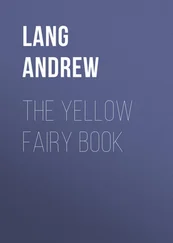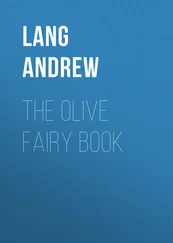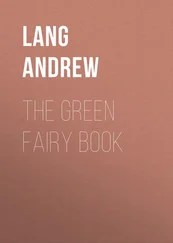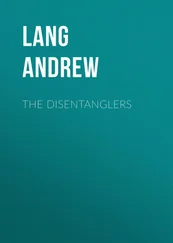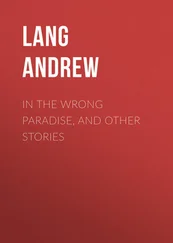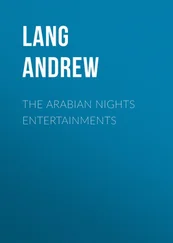Andrew Lang - The Secret of the Totem
Здесь есть возможность читать онлайн «Andrew Lang - The Secret of the Totem» — ознакомительный отрывок электронной книги совершенно бесплатно, а после прочтения отрывка купить полную версию. В некоторых случаях можно слушать аудио, скачать через торрент в формате fb2 и присутствует краткое содержание. Жанр: foreign_antique, foreign_prose, на английском языке. Описание произведения, (предисловие) а так же отзывы посетителей доступны на портале библиотеки ЛибКат.
- Название:The Secret of the Totem
- Автор:
- Жанр:
- Год:неизвестен
- ISBN:нет данных
- Рейтинг книги:4 / 5. Голосов: 1
-
Избранное:Добавить в избранное
- Отзывы:
-
Ваша оценка:
- 80
- 1
- 2
- 3
- 4
- 5
The Secret of the Totem: краткое содержание, описание и аннотация
Предлагаем к чтению аннотацию, описание, краткое содержание или предисловие (зависит от того, что написал сам автор книги «The Secret of the Totem»). Если вы не нашли необходимую информацию о книге — напишите в комментариях, мы постараемся отыскать её.
The Secret of the Totem — читать онлайн ознакомительный отрывок
Ниже представлен текст книги, разбитый по страницам. Система сохранения места последней прочитанной страницы, позволяет с удобством читать онлайн бесплатно книгу «The Secret of the Totem», без необходимости каждый раз заново искать на чём Вы остановились. Поставьте закладку, и сможете в любой момент перейти на страницу, на которой закончили чтение.
Интервал:
Закладка:
These observers begin in the south centre, where Mr. Howitt leaves off in his northerly researches, and go north. They start with the Urabunna tribe, north-east of Lake Eyre, congeners of Mr. Howitt's Dieri, and speaking a dialect akin to theirs, while the tribe intermarry marry with the Arunta (whose own dialect has points in common with theirs) of the centre of the continent These Urabunna are apparently in the form of social organisation which we style primitive (No. 1), but there are said, rather vaguely, to be more restrictions on marriage than is usual, people of one totem in Kiraru phratry being restricted to people of one totem in Matteri phratry. 18 18 Cf. Howitt, Native Tribes of South-East Australia , pp. 188-189. Native Tribes of Central Australia , p. 60.
They have phratries, totem kins, apparently no matrimonial classes (some of their rules are imperfectly ascertained), and they reckon descent in the female line. But, like the Dieri (and unlike the tribes of the south and east), they practise subincision; they have, or are said to have, no belief in "a supernatural anthropomorphic great Being"; they believe in "old semi-human ancestors," who scattered about spirits, which are perpetually reincarnated in new members of the tribe; they practise totemic magic; and they cultivate the Dieri custom of allotting paramours. Thus, by social organisation, they attach themselves to the south-eastern tribes (1), but, like the Dieri, and even more so (for, unlike the Dieri, they believe in reincarnation), they agree in ceremonies, and in the general idea of their totemic magic, rites, and mythical ideas, with tribes who, as regards social organisation, are in state (4), reckon descent in the male line, and possess, not four , but eight matrimonial classes.
This institution of eight classes is developing in the Arunta "nation," the people of the precise centre of Australia, who march with, and intermarry with, the Urabunna; at least the names for the second set of four matrimonial classes, making eight in all, are reaching the Arunta from the northern tribes. All the way further north to the Gulf of Carpentaria, male descent and eight classes prevail, with subincision, prolonged and complex ceremonials, the belief in reincarnation of primal semi-human, semi-bestial ancestors, and the absence (except in the Kaitish tribe, next the Arunta) of any known belief in what Mr. Howitt calls the "All Father." Totemic magic also is prevalent, dwindling as you approach the north-east coast. In consequence of reckoning in the male line (which necessarily causes most of the dwellers in a group to be of the same totem), local organisation is more advanced in these tribes than in the south and east.
We next speak of social organisation (5), namely, that of the Arunta and Kaitish tribes, which is without example in any other known totemic society all over the world. The Arunta and Kaitish not only believe, like most northern and western tribes, in the perpetual reincarnation of ancestral spirits, but they, and they alone, hold that each such spirit, during discarnate intervals, resides in, or is mainly attached to, a decorated kind of stone amulet, called churinga nanja . These objects, with this myth, are not recorded as existing among other "nations." When a child is born, its friends hunt for its ancestral stone amulet in the place where its mother thinks that she conceived it, and around the nearest rendezvous of discarnate local totemic souls, all of one totem only. The amulet and the local totemic centre, with its haunted nanja rock or tree, determine the totem of the child. Thus, unlike all other totemists, the Arunta do not inherit their totems either from father or mother, or both. Totems are determined by local accident. Not being hereditary, they are not exogamous: here, and here alone, they do not regulate marriage. Men may, and do, marry women of their own totem, and their child's totem may neither be that of its father nor of its mother. The members of totem groups are really members of societies, which co-operatively work magic for the good of the totems. The question arises, Is this the primitive form of totemism? We shall later discuss that question (Chapter IV.).
Meanwhile we conceive the various types of social organisation to begin with the south-eastern phratries, totems, and female reckoning of descent (1) to advance to these plus male descent (2a), and to these with female descent and four matrimonial classes (2b). Next we place (3) that four-class system with male descent; next (4) the north-western system of male descent with eight matrimonial classes, and last (as anomalous in some respects), (5) the Arunta-Kaitish system of male descent, eight classes, and non-hereditary non-exogamous totems.
As regards ceremonial and belief, we place (1) the tribes south and east of the Dieri. (2) The Dieri. (3) The Urabunna, and north, central, and western tribes. (4) The Arunta. The Dieri and Urabunna we regard (at least the Dieri) as pristine in social organisation, with peculiarities all their own, but in ceremonial and belief more closely attached to the central, north, and west than to the south-eastern tribes. As concerns the bloody rites, Mr. Howitt inclines to the belief (corroborated by legends, whatever their value) that "a northern origin must ultimately be assigned to these ceremonies." 19 19 Howitt, op. cit ., p. 676, N.T. , p. 20.
It is natural to assume that the more cruel initiatory rites are the more archaic, and that the tribes which practise them are the more pristine. But this is not our opinion nor that of Messrs. Spencer and Gillen. The older rite is the mere knocking out of front teeth (also used by the Masai of East Central Africa). This rite, in Central Australia, "has lost its old meaning, its place has been taken by other rites." 20 20 Native Tribes of Central Australia , p. 214. The same opinion is stated as very probable in Northern Tribes of Central Australia , p. 329.
… Increased cruelty accompanies social advance in this instance. In another matter innovation comes from the north. Messrs. Spencer and Gillen are of the opinion that "changes in totemic matters have been slowly passing down from north to south." The eight classes, in place of four classes, are known as a matter of fact to have actually "reached the Arunta from the north, and at the present moment are spreading south-wards." 21 21 N. T. , p. 20.
Again, a feebler form of the reincarnation belief, namely, that souls of the young who die uninitiated are reincarnated, occurs in the Euahlayi tribe of north-western New South Wales. 22 22 Mrs. Langloh Parker's M.S.
Whether the Euahlayi belief came from the north, in a limited way, or whether it is the germinal state of the northern belief, is uncertain. It is plain that if bloody rites and eight classes may come down from the north, totemic magic and the faith in reincarnation may also have done so, and thus modified the rites and "religious" opinions of the Dieri and Urabunna, who are said still to be, socially, in the most pristine state, that of phratries and female descent, without matrimonial classes. 23 23 I am uncertain as to this point among the Urabunna, as will appear later.
It is also obvious that if the Kaitish faith in a sky-dweller (rare in northern tribes) be a "sport," and if the Arunta churinga nanja, plus non-hereditary and non-exogamous totems, be a "sport," the Dieri and Urabunna custom, too, of solemnly allotted permanent paramours may be a thing of isolated and special development, not a survival of an age of "group marriage."
CHAPTER II
METHOD OF INQUIRY
Method of inquiry – Errors to be avoided – Origin of totemism not to be looked for among the "sports" of socially advanced tribes – Nor among tribes of male reckoning of descent – Nor in the myths explanatory of origin of totemism – Myths of origin of heraldic bearings compared – Tribes in state of ancestor-worship: their totemic myths cannot be true – Case of Bantu myths (African) – Their myth implies ancestor-worship – Another African myth derives tribal totems from tribal nicknames – No totemic myths are of any historic value – The use of conjecture – Every theory must start from conjecture – Two possible conjectures as to earliest men gregarious (the horde), or lonely sire, female mates, and off-spring – Five possible conjectures as to the animal names of kinships in relation to early society and exogamy – Theory of the author; of Professor Spencer; of Dr. Durkheim; of Mr. Hill-Tout; of Mr. Howitt – Note on McLennan's theory of exogamy.
Читать дальшеИнтервал:
Закладка:
Похожие книги на «The Secret of the Totem»
Представляем Вашему вниманию похожие книги на «The Secret of the Totem» списком для выбора. Мы отобрали схожую по названию и смыслу литературу в надежде предоставить читателям больше вариантов отыскать новые, интересные, ещё непрочитанные произведения.
Обсуждение, отзывы о книге «The Secret of the Totem» и просто собственные мнения читателей. Оставьте ваши комментарии, напишите, что Вы думаете о произведении, его смысле или главных героях. Укажите что конкретно понравилось, а что нет, и почему Вы так считаете.
